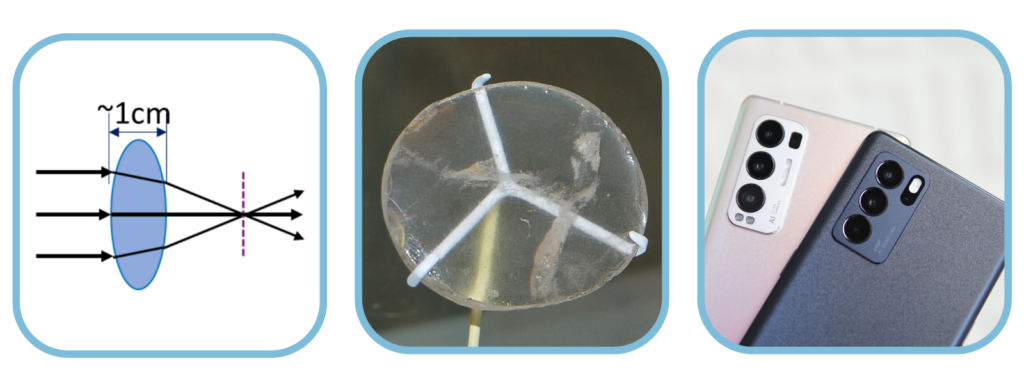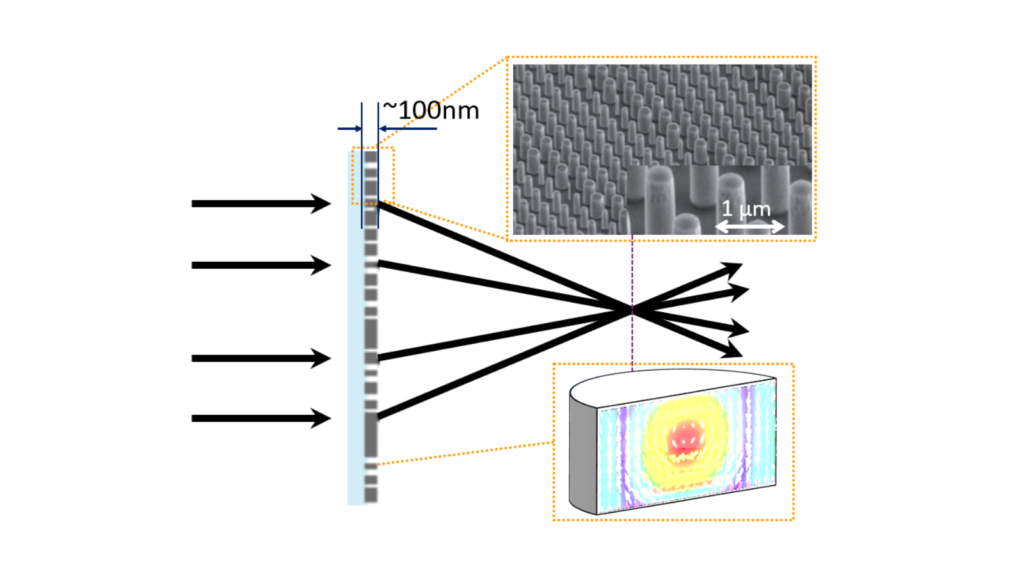For thousands of years, optics has revolved around the manipulation of light using a lens. One of the earliest known lenses, the Nimrud lens, was unearthed in modern day Iraq and dates back to the 8th Century BC. Since then, our use of lenses has matured. Microscopes and cameras all have lenses in them. Different shaped lenses created with different materials manipulate light by reflecting refracting and transmitting in different ways.

We’ve gotten pretty good at harnessing traditional optics to do amazing things—we can communicate across the globe in real time, see into our body’s cells, and take a perfect selfie. But there is only so far that we can push the laws of physics. The nature of light means that lenses are as small as they’re going to get. Devices can’t be further miniaturised without a new type of optics.
 Meta-optics (also known as nanophotonics) is the manipulation of light using metasurfaces. The metasurfaces are millions of nanostructures that are smaller than a wave of light grouped together. As light passes over them, the structures can manipulate the wave, similar to how a lens does, but at a much smaller scale.
Meta-optics (also known as nanophotonics) is the manipulation of light using metasurfaces. The metasurfaces are millions of nanostructures that are smaller than a wave of light grouped together. As light passes over them, the structures can manipulate the wave, similar to how a lens does, but at a much smaller scale.
Because meta-surfaces are much smaller than traditional optics (only millimetres in size) they will be less expensive to put on drones and satellites, easier to fit into small devices, and cheaper to produce.
Holographic displays, night vision, wearable optical sensors, LIDAR, remote sensing, mobile medical diagnostics, augmented reality and quantum communications systems are just a few of the technologies to be reimagined with meta-optics.
Metasurfaces will one day turn your reading glasses into night-vision ones, replace blood tests with breath tests, enable autonomous cards to identify potential harzards and alert you when food in your fridge has gone bad.
So why is TMOS talking about quantum?
Quantum has been the next big thing in information systems and communication for a long time. In a nutshell, information is attached to sub-atomic particles and transmitted. This process relies on single photon emission and detection.
The development of fully functional quantum communication technologies has previously been hampered by the lack of reliable quantum sources that can encode and transmit the information. Where current quantum emitters are created using complex methods in expensive clean rooms and require cryogenic cooling, meta-optics is moving towards mass produced emitters that work at room temperature, which will be the breakthrough needed for quantum communication to go mainstream.
Potential applications of meta-optics
- Remote Earth observation
- Wearable sensors
- Night vision
- Agritech
- LiDAR
- Augmented and virtual reality
- Portable diagnostics
- Holographic displays
- Quantum communications
Want more detail?
Read the our meta-optics review in Nature Photonics
Latest TMOS news & research
Acknowledgement of Country
The ARC Centre for Transformative Meta-Optical Systems (TMOS) acknowledges the Traditional Owners and their custodianship of the lands on which our teams operate. We pay our respects to their Ancestors and their descendants, who continue cultural and spiritual connections to Country. We recognise their valuable contributions to Australian and global society.